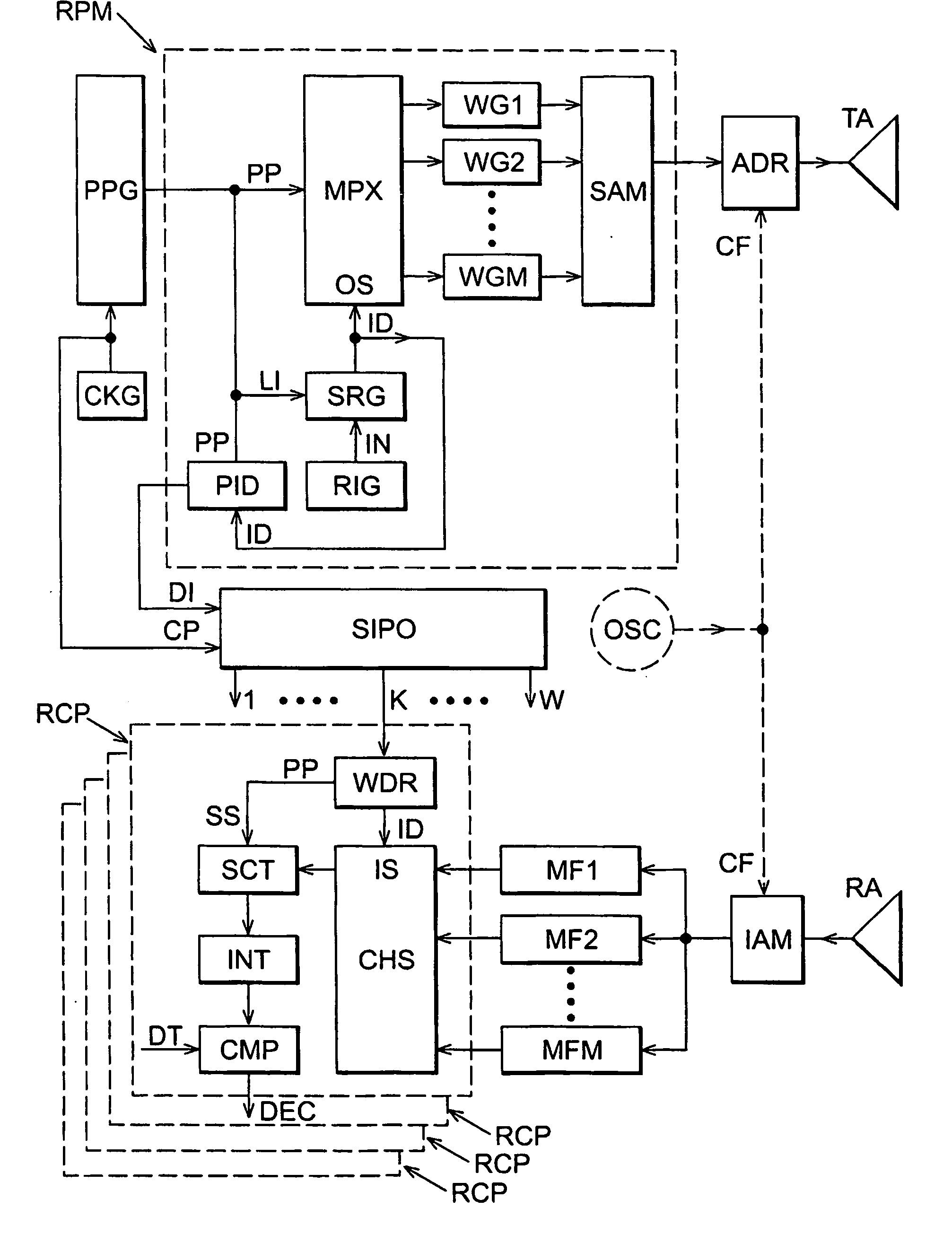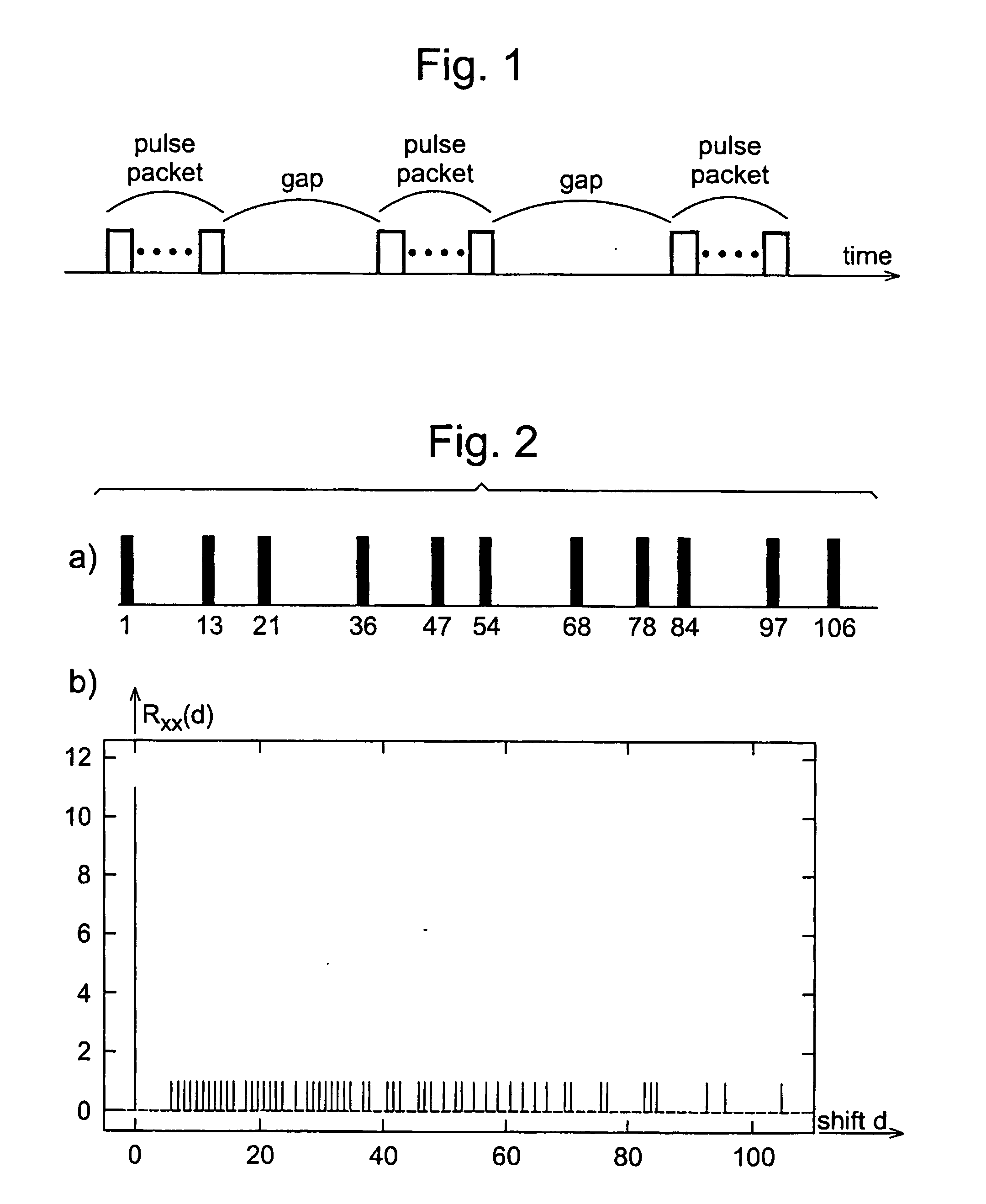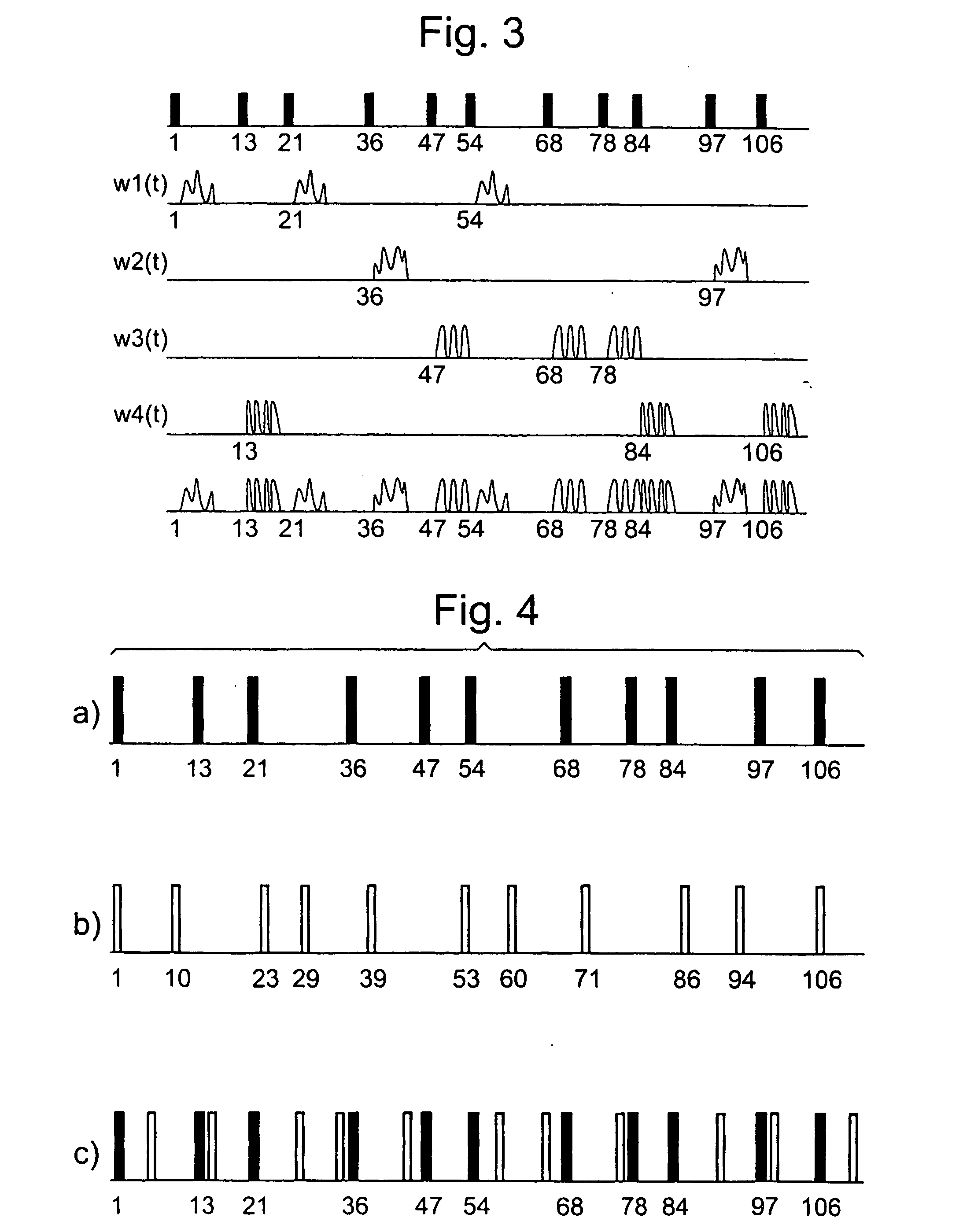Generations of sequences of waveforms
a waveform and sequence technology, applied in the field of waveform sequence generation, can solve the problems of difficult to construct large sets of binary sequences with good autocorrelation and cross-correlation properties, difficult to assign a distinct binary sequence to each, and inability to increase the ratio r of the peak autocorrelation value, rsub>xx
- Summary
- Abstract
- Description
- Claims
- Application Information
AI Technical Summary
Benefits of technology
Problems solved by technology
Method used
Image
Examples
Embodiment Construction
[0016] Aspects of the present invention are set out in the accompanying claims.
[0017] In accordance with another aspect of the invention, a primary symbol sequence having a narrow autocorrelation function (i.e. an autocorrelation function which, for all non-zero shifts, has a value which is substantially smaller than the maximum value at zero shift) is chosen, and each symbol of the sequence is replaced (substituted) by a waveform, drawn at random from a set comprising a finite number of suitably chosen waveforms of finite duration. Preferably, the waveforms should have the same duration and be mutually orthogonal (uncorrelated) to facilitate their discrimination in the receiver.
[0018] For clarity, the invention will primarily be described in the context of arrangements wherein the primary symbol sequence is a train of discrete pulses, and the pulses are arranged in predetermined packets (although neither of these features is essential, as will be described). The mechanism of repr...
PUM
 Login to View More
Login to View More Abstract
Description
Claims
Application Information
 Login to View More
Login to View More - R&D
- Intellectual Property
- Life Sciences
- Materials
- Tech Scout
- Unparalleled Data Quality
- Higher Quality Content
- 60% Fewer Hallucinations
Browse by: Latest US Patents, China's latest patents, Technical Efficacy Thesaurus, Application Domain, Technology Topic, Popular Technical Reports.
© 2025 PatSnap. All rights reserved.Legal|Privacy policy|Modern Slavery Act Transparency Statement|Sitemap|About US| Contact US: help@patsnap.com



